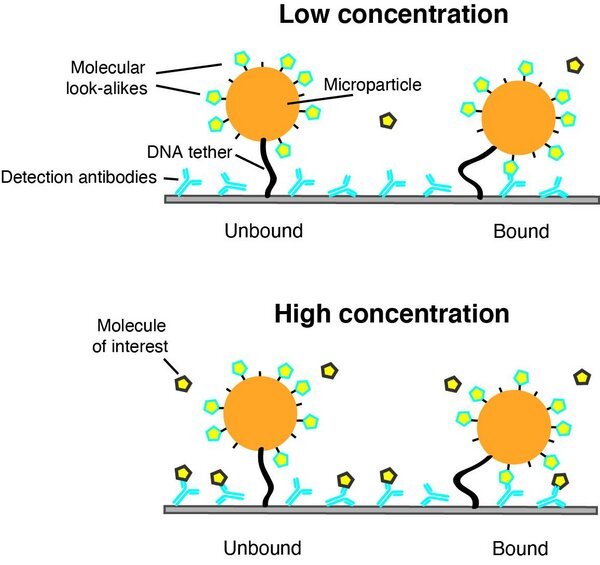Researchers from the departments of biomedical engineering and applied physics of the Technical University
Junhong Yang, Menno Prince and colleaguesdemonstrate a novel approach that can continuously measure the concentration of low-mass molecules of interest in samples based on biosensing by particle mobility (BPM) analysis.
Existing biosensors usually provide onemeasurement result for one biological sample. The sample can be blood, sweat, urine, or saliva, and the result can be the level of protein, hormone, drug, or virus in the sample.
However, it would be better if the sensors provided a continuous stream of data, which would allow a person to track how the disease develops over time.
Each biosensor consists of three main parts:
- a molecular component with a bioreceptor that can bind to the molecule of interest,
- the conversion principle that converts molecular recognition into a detectable signal,
- detection system that records a signal and presents the response in the form of a numerical, graphic, audio or light indication that is easy for the user to interpret.
“In this work, we focused on the first part- the development of a molecular principle for continuous measurement of molecules of interest with low molecular weight and low concentration, "explains one of the authors of the development.
The sensor, developed by Ian, Prince and team, adapted the use of molecular twins or fake versions of the molecules of interest.
 Eindhoven University of Technology
Eindhoven University of Technology
How do these similar molecules help detectreal molecules? The surface of the sensor is coated with antibodies that can bind to molecules of interest. When there are no molecules in the test liquid, similar molecules can freely bind to the antibodies. However, when molecules of interest are found, they can bind to antibodies. As a result, the doubles are freed from “work”.
The touch platform operation is quite simple and,I must say, brilliant. All molecular binding events must be reversible. This includes binding between antibodies and twins, as well as binding between antibodies and molecules of interest in solution.
Duplicate binding events occur andunbinding involving similar molecules or molecules of interest in a liquid, and these events can be easily measured with optical microscopy by recording the state of a microparticle.
Read also
On day 3 of illness, most COVID-19 patients lose their sense of smell and often suffer from a runny nose
See the closest shots of the Sun's surface
The Doomsday glacier turned out to be more dangerous than scientists thought. We tell the main thing